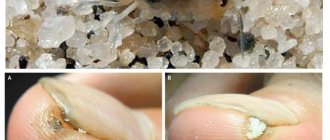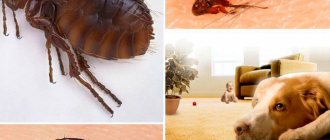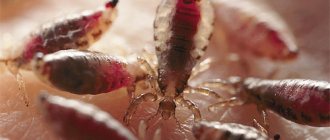A cat is a favorite of the whole family, it brings comfort to our home, gives its owners warmth and joy. For his part, a person must take care of the animal and monitor its health. The main problem that cat owners face is the diseases of their pets, as well as various parasites that often bother them. Fleas are the most common parasite on cats, especially when it comes to animals that walk outside. These require immediate and decisive action on the part of the owner because they seriously undermine their health. These parasites can be carriers of dangerous diseases and pose a danger to humans. They do not live on it, but can feed on its blood through bites.
You can remove fleas from a cat at home, but you should first show the animal to a veterinarian. These pests lead to serious weakening of the animal, in advanced cases it causes anemia, weakens the immune system, which can cause other, more serious diseases. That is why any cat owner should know the first signs of these insects, as well as how to get rid of them.
Cat flea: who is it and where does it come from?
To understand where cats get fleas from, you should learn more about these parasites: their structure, feeding habits, and life cycle. Fleas are a huge order of wingless insects that are blood-sucking exoparasites and parasitize on any animal. They have a rather narrow specialization: there are fleas of rabbits (Spilopsyllus cuniculi), dogs (Ctenocephalus canis), humans (Pulex irritans) and cats (Ctenocephalides felis). These insects also parasitize rats and birds. Outwardly, they are very similar; only a professional entomologist can determine the exact type of insect.
general description
What does a flea look like on a cat? Their body size ranges from 1 to 5 mm, the cat flea reaches approximately 2 mm. Males are smaller than females. The parasite that has sucked blood increases sharply in size—approximately 2 times. The insect's body is flattened laterally (this makes it easy to move between hairs) and covered with numerous spines and bristles. They help the insect to stay between the hairs of fur or feathers.
The oral apparatus of the parasite is of the piercing-sucking type, which includes a special stylet that pierces the skin of the host. They do not have a proboscis. The limbs of the parasite are strong, they give it the ability to move along surfaces at any angle, as well as make long jumps. The abdomen has special tactile hairs that are sensitive to air vibrations.
They are wingless insects - with their lifestyle, wings would only get in the way of the parasite. The shape of the body and the chitinous cover make mechanical damage to the insect very difficult - it cannot be crushed with your fingers. The parasite can only be destroyed by crushing it with a fingernail on a hard surface.
This is interesting! Fleas are one of the best jumpers in the animal kingdom. Having a size of only a few millimeters, they can jump 19 cm in height and 30 cm in length. This is a hundred times the size of their own body. A person, in order to repeat these results, must long jump 160 meters.
Life cycle
Fleas are insects with a full life cycle; they have the stages of adult insect, egg, larvae and pupae. The female lays her eggs anywhere, and after about two weeks a worm-like larva appears, which grows and molts several times. The larvae live in dust and debris, feeding on decaying organic matter and excrement.
Later, the larva pupates and after a while emerges from the pupa as an adult insect. Now she just needs to find her owner.
The insect's lifespan is approximately 2 years. Parasites reproduce very actively; during her life, the female lays up to 2 thousand eggs.
Cat fleas can also spread to rats, and they displace the rat flea.
Eating habits
Each type of parasite prefers its own host. They adapt to a certain skin structure, its temperature, the composition of the host’s blood and other characteristics. They can feed on the blood of other animals, but they do not do this very willingly.
Although, it should be noted that in this regard the cat flea is the most picky, as it can easily drink both dog and human blood. She is the champion in the number of bites to people.
Typically, these insects do not live permanently on their host. Rather, it serves as their dining room. They attack him from time to time, drink his blood and leave again. They live near their owner. There are some types of fleas that live permanently on their host; these are parasites of nomadic animals.
They feed daily, but can easily endure several months of fasting, after which they pounce on food with particular greed.
This is interesting! Fleas have changed little over the past 50 million years. The fossil insects that scientists studied are almost no different from modern ones. Evolution, apparently, considered that it had already created a masterpiece, which did not make sense to change.
Diseases
Fleas are carriers of serious diseases in humans and domestic animals. Rat pests are especially dangerous. They carry plague, typhus and other serious diseases. In the Middle Ages, entire cities died out from plague epidemics transmitted by rats.
Fortunately, the cat flea does not carry such dangerous diseases, but other types of these insects can live on your pet.
Where do fleas come from on a domestic cat?
The most careful care of your pet, even if it does not go outside, is not a 100% guarantee that your pet will not have parasites. People often ask how a domestic cat got fleas if it has never left the premises or interacted with outdoor animals. In fact, the transfer of parasites from one animal to another is just one way of infection. There are several of them:
- walking on land infested with flea eggs;
- contact with an infected animal;
- brought into the house by a person (most often these are insect eggs, but there may also be adults).
Therefore, a pet can easily pick up these ubiquitous parasites. If your pet walks outside, then the probability of infection is almost 100%.
Up to 200 insects can live on one animal at the same time.
Types of fleas (video)
Contrary to popular belief, the use of anti-flea shampoos with a prolonged effect is not capable of providing high-quality and long-term protection against fleas and can be used to destroy parasites that are already present. Collars from various manufacturers are designed to repel insects, but they show maximum effectiveness only in combination with other anti-flea products.
How to tell if a cat has fleas
How to determine if a cat has fleas? This is one of the most frequently asked questions on this topic. It is quite simple to identify parasites on an animal’s body; there are characteristic signs of this disease that are hard to miss:
- The pet not only itches, but violently bites into the fur, which it does especially often.
- The animal is restless and very nervous. Insects cause severe itching, depriving them of their usual rest. Often meows pitifully, trying to attract your attention.
- When scratching, you can see brown lumps - these are parasite excrement.
- Also, when combing, the parasites themselves are visible.
The disease is conventionally divided into several stages. Immediately after infection (the first stage), the animal’s behavior is not much different from usual - the cat eats normally and is playful. Visually detecting parasites is almost impossible because there are very few of them.
The only symptom that may indicate that pest infestation has occurred is your pet's frequent scratching.
At the second stage of infection, the animal’s behavior changes greatly: it begins to get nervous, sleeps poorly, constantly itches and tries to gnaw out pests with its teeth. Scratches and wounds appear on the body. At this stage, parasites can be easily detected visually.
If measures are not taken immediately, the disease will progress. Your affectionate, sociable and cheerful cat will turn into a gloomy and downtrodden animal. In addition, infection in an advanced stage has unpleasant health consequences:
- the animal loses weight and becomes weaker;
- stops playing;
- the fur falls out in clumps;
- Frequent vomiting may begin;
- various dermatitis develops.
It can be added that in caring owners, the infection does not reach the third stage. It is difficult not to notice parasites already at the second stage of the disease, and the means that exist now (this will be discussed in detail below) allow you to effectively and fairly quickly get rid of these insects.
The most favorite places for fleas to live on a cat’s body are the stomach, neck area and the jaw area. It should be remembered that they are not the only parasites that can appear on your pet. There are also lice eaters, but they are usually located on the fur, and fleas prefer the skin of the animal.
Symptoms of infection and self-diagnosis
The bites of blood-sucking parasites cause irritation and severe itching of the skin in pets, in some cases accompanied by an allergic reaction. As a result, the animal begins to intensively lick the fur, and some of the fleas are removed. Therefore, it is sometimes difficult to understand that a cat or dog is suffering from fleas - the parasites jump on the animal only while feeding.
If you suspect something is wrong, you need to monitor your pet’s condition. If he is attacked, he begins to itch frequently and sharply, most of all in the area of the head and tail. The animal tries to bite insects, sometimes directly biting into itchy places on the body.
The skin in the affected areas becomes irritated and small red bumps and crusty areas may appear along the back and neck. The hair begins to fall out more intensively, and in advanced cases, bald patches appear. Fleas are carriers of helminths, so the presence of worms in an animal's feces indirectly indicates infection by insects.
Signs of fleas on an animal.
Having appeared in the house, parasites spread throughout its territory - they hide in carpets and other woolen products. The pet cannot hide from them anywhere, and its behavior changes. Owners of a cat or dog can recognize attacks by blood-sucking insects by the following signs:
- the animal avoids its usual sleeping place;
- becomes irritable and restless;
- shakes his head vigorously;
- suddenly jumps up;
- makes plaintive sounds or growls.
You can detect insects using a white cloth and a special comb, the teeth of which are arranged in such a way that fleas get stuck in them, or a comb with fine teeth. The pet is placed or laid on a cloth and its fur is combed from head to tail.
Increased attention is paid to areas on the inside of the paws, the back of the neck and at the base of the tail, where insects most often hide.
During the procedure, either fleas themselves are found in an infected animal - brown insects with a flattened body 2-4 mm long, or their eggs and excrement, which look like a mixture of white and black grains. A drop of water should be applied to the suspicious material. If it contains flea excrement, then when wet, the black grains will turn dark red because they contain blood cells. If there are no signs of infection, but the symptoms do not disappear, you should consult a veterinarian.
Why are cat fleas dangerous?
Infection with them is dangerous not only because of the deterioration of your pet’s general condition; there are also other reasons why you should rid your animal of these parasites as quickly as possible. These are diseases that are transmitted by fleas and can be dangerous for both the cat and its owners.
Danger for cats
In addition to a noticeable deterioration in physical and mental condition, fleas very often cause allergic dermatitis. Also, these insects are carriers of helminths. To date, it has been proven that these parasites are intermediate hosts of several dozen species of worms. The larvae feed on worm eggs, and they are also stored inside the adult insect. A cat may well become infected with helminths by biting into insects.
Fleas are carriers of infectious anemia - hemobartonellosis, which leads to a decrease in red blood cells in the animal's blood. They also carry dangerous fungal and viral diseases. Among them are mycoplasmosis - it affects various organs, as well as rickettsiosis - a disease characterized by a febrile state of the animal.
Severe infestation with them can lead to complete or partial baldness of the pet - the lost hair will never grow back. In addition, your pet may develop serious mental problems.
Danger for kittens, pregnant and lactating cats
Fleas pose an even greater danger to kittens. A fragile body is not able to fight parasites, so they often cause their death. Flea infestation in kittens leads to the following consequences:
- rapid weight loss and cessation of growth;
- the occurrence of anemia.
It is this disease that most often causes the death of an animal.
Parasites are also dangerous for pregnant cats. They deprive them of nutrients and weaken the animal. There is one more point - many of the anti-flea drugs are toxic. Their entry into the body of a pregnant woman can negatively affect the offspring. The situation is similar with feeding animals. Veterinarians advise to carry out the destruction of parasites before future mating, so you can avoid the harmful effects of parasites and medications.
Danger to humans
Cat fleas also bite humans, although they do so reluctantly and quite rarely. As mentioned above, these insects have a rather narrow specialization and prefer to feed on the blood of one host. Bites are fraught with both minor troubles and serious consequences, in the form of dangerous diseases carried by parasites.
When bitten, the parasite injects an anesthetic and an anticoagulant into the victim's body, which prevents blood clotting. Both of these proteins are foreign to us, and the human immune system instantly reacts to this - an allergic reaction begins (itching, burning, inflammation). Multiple bites disfigure the skin, it becomes covered with wounds and scratches. The legs suffer the most; the insect can jump up to about a person’s knee.
There is another danger - diseases that fleas carry:
- pulicosis;
- massive dermatitis;
- dipylidosis;
- brucellosis;
- creeping erythema;
- anthrax.
How to get rid of fleas on a cat
Those faced with this scourge ask questions:
How to kill fleas on a cat and what to use to get them out?
What methods and drugs are the most effective and least harmful to the health of the animal?
It is also important to know how to completely expel fleas from your home. As mentioned above, parasites do not live permanently on an animal, they use it only for food, and they usually live and reproduce somewhere nearby.
Treatment of fleas in cats
Today, there are a large number of methods and means that allow you to cure a cat very quickly and effectively. Here are the main ones:
Drops - applied to the animal’s withers, are very effective and allow you to quickly solve the problem. They have a residual effect. Their main disadvantage is the likelihood of developing allergies.
Sprays are a fairly effective remedy that can cure in a short period of time. They act effectively, have no residual effect, but rarely cause allergies.
Shampoos are the most gentle and effective remedy for fleas in cats, however, they are not so easy to use (bathing some cats is very difficult). When using shampoo, be careful not to get the product into the animal's eyes.
A collar is more about preventing fleas in cats than treating them. It is better to use it after applying the methods described above. It is especially relevant for pets that go outside. In addition to protecting against parasites, it shows workers of special services that the animal is not homeless, but has an owner.
There are also tablets and powders against these insects, but they are less convenient to use. It is quite possible to remove fleas from a cat at home, but before treating your pet it is better to consult a veterinarian.
Removing parasites indoors
It is not enough to get rid of parasites on the animal itself; they should also be destroyed in the premises.
First of all, you need to take care of the place where the animal lives - the bedding needs to be changed or boiled. Then, you should treat all surfaces in the apartment on which adult parasites, their eggs and larvae may remain.
The premises are cleaned using special products that can be purchased at a veterinary pharmacy.
Traditional methods
You can get rid of fleas on a kitten at home without the use of special chemicals. This is especially true if the baby is less than 2 months old. Traditional methods are gentle and harmless, but sometimes tedious and not effective enough. But if you have no choice, it's worth trying them. How to remove fleas from a kitten using traditional methods: manually or using natural remedies.
Mechanical removal
By rights, the safest method of getting rid of fleas is mechanical, which allows you to remove insects even from newborn kittens. At the same time, it is the most labor-intensive and time-consuming, since it is not possible to quickly get rid of fleas by combing due to the presence of numerous clutches of eggs.
To carry out the procedure, you will need a hard plastic comb with frequent rounded teeth and a white sheet of paper. Combing fleas should begin from the back, gradually moving to the abdomen and paws. It is not recommended to manipulate the pet's head - you can injure the kitten's ears, nose and eyes. Any fleas on the paper should be immediately crushed or thrown into a container of water. The processing comb also needs to be periodically cleaned of accumulations of insects and hair.
You need to carry out the procedure twice a day until the fleas disappear. One combing session should take about 10 minutes on average. As a rule, it takes 1 month to solve the problem. Afterwards, it is necessary to check the fur for several weeks, since new individuals could emerge from the remaining eggs.
Bathing
Plain water will not get rid of fleas. But if you add salt, tansy or wormwood to the bath, the insects will begin to disappear.
Salt bath. Add table salt to warm water at the rate of 1 tbsp. 200 ml, dissolve. Place your pet in the solution for 10 minutes. Then pat the fur dry with a towel and comb out with a comb. Repeat the procedure every week.
A decoction of wormwood or tansy. Brew the chopped herb in boiling water (1 tablespoon per glass). Prepare a warm bath and pour in the infusion. Keep your pet in the solution for several minutes and dry the fur well. The procedure can be carried out several times a week.











